Author: sp15 (US server)
Part I: http://ftr.wot-news.com/2014/03/07/swedish-tanks-part-i-strv-m21-29/
Part II: http://ftr.wot-news.com/2014/03/12/swedish-tanks-part-ii-strv-m31-strv-fm31/
Part III: http://ftr.wot-news.com/2014/03/15/swedish-tanks-part-iii-landsverk-l-100-and-l-120/
Part IV: http://ftr.wot-news.com/2014/03/21/swedish-tanks-part-iv-landsverk-l-60/
Part V: http://ftr.wot-news.com/2014/03/27/swedish-tanks-part-v-strv-m37-and-strv-m41/
Part VI: http://ftr.wot-news.com/2014/04/08/swedish-tanks-part-vi-sav-m43/
Part VII: http://ftr.wot-news.com/2014/04/18/swedish-tanks-part-vii-strv-m42/
Part VIII: http://ftr.wot-news.com/2014/05/08/swedish-tanks-part-viii-pvkv-m43/
Part IX: http://ftr.wot-news.com/2014/05/12/swedish-tanks-part-ix-tlp-46-and-strv-leo
After the rejection of the 30 ton tank projects, that were in development since WW2, Swedish tank development had to start over again from scratch. In 1949, discussions began regarding the next Swedish tank. Many of the ideas behind the project were outdated right from the start and the project would be completely revised in 1950, as it was realized that the project would be hopelessly obsolete on modern battlefield.
Our story begins in 1949, when discussions first began regarding the new Swedish tank, following the 1947 cancellation of the previous tank project. It was concluded that the new tank would be a 20-ton vehicle, mainly intended for infantry support and armed with a 75mm gun. The new project was based on the idea that large numbers of tanks have to be able to take losses, which in a country with limited resources means that armor needs to be sacrificed. It was thought that the protection of the vehicle could not be increased to a relevant degree without too high a cost per vehicle. Another idea was that Sweden did not have the resources or infrastructure for heavy vehicles and while there may have been some truth behind these ideas at the time, the times were changing and Swedish infrastructure and resources were rapidly improving as Sweden helped rebuild Europe after WW2.
Meanwhile at Landsverk, a series of mainly light tanks was in development for the export market after WW2. One of these projects first offered in 1948 was the Strv Lansen (Lance), a 19 ton light tank with 35mm of armor and a long 75mm gun. The vehicle was basically a smaller version of the Strv Leo, sharing its general shape and gun, while having lighter armor and better mobility. There was an even lighter version of the tank called Strv Pilen (Arrow) we well, which weighed 17 tons and shared its short 75mm gun with the Strv m/42. In 1949, the Swedish military suddenly became interested in Strv Lansen and it would later become Landsverk’s proposal for the 20 ton tank project.
Strv Pilen
Strv Lansen 1948
In battle, the tank was to be able to engage three main types of targets. The first were other tanks and AFV´s. The second type was infantry and the third type of target was anti-tank guns. It was actually considered to only equip the tank with something like a 75mm or 105mm howitzer, that would not have been able to fight other tanks from the frontal angle and have the tank mainly support infantry, while the anti-tank capability would be handled almost exclusively by tank destroyers. What happened instead was that the idea of a cheap poorly armored vehicle for infantry support would develop into a separate turretless vehicle, which would result in the Ikv series of assault guns.
As the discussions continued, it was decided that the 20 ton tank would be a part of either a heavy or a light vehicle group. Plans were made for a self-propelled anti-aircraft gun and it was decided that the tank could be based on it, with maximum weight of 15 tons. The other option was to keep the weight in the 20 ton range and have the vehicle share parts with the projected 30 ton SPG or the 25-30 ton TD project, which had reappeared. What this meant was that things such as road-wheels and tracks, as well as transmissions and engines, could be standardized between these vehicles.
Several new engine options were considered for the new vehicles, amongst these were a 430-450hp modification of the Volvo A8B engine or a rebuilt version of the same engine to 12 cylinders, called A12B with 640hp. These engines were considered only for the vehicles in the heavier weight class. There was also a new air-cooled V12 and a 220hp engine planned for the lighter vehicles – or in a dual mount for the heavier ones.
Strv Lansen shematics from circa late 1949 early 1950
After a calculation of the possible armor for the tank within the two weight limits, it was decided that “the upper weight limit of 20 tons is to be fully utilized” and that the vehicle should have frontal protection against 57mm guns, to allow for greater durability in combat and to force the enemy to bring guns bigger than conventional 20-37mm. It was also pointed out that the chassis could be shared with the 30 ton SPG, which would be able to handle the possible weight increase.
In 1950, it was realized that the current 75mm gun was no longer enough and that the tank should carry a gun of 10,5cm caliber. After some discussion regarding the gun’s muzzle velocity, it was decided that the 10,5cm gun should have a muzzle velocity of 600m/s with the capability of firing a sub-caliber shell at 870m/s. Studies were also made regarding what’s possible in terms of tank armament within the 35 ton weight limit. Some ideas, like 75mm autoloaders, were discussed, but they seem not to be directly related to the 20 ton tank.
It was also in 1950, when the military command began to have doubts about the capabilities of a 20 ton light tank on modern battlefield. Some even wanted a 45-50 ton tank, but it was quickly pointed out that Sweden couldn’t afford to produce such a heavy tank in large numbers and that other reasons would prevent the adoption of such a heavy vehicle anyhow. It was also noted that a vehicle as light as 20 tons could only really effectively be used when facing enemy light tanks and that the tank would be outclassed by heavier tanks.
The development of the 20 ton tank continued and some interesting ideas emerge. One document mentions that the combination of the tank and anti-tank roles are now possible within reasonable weight. What followed was a proposal for a vehicle armed with the 10,5cm L/50 Lvkan m/42 anti-aircraft gun, based on the 30 ton SPG chassis. The vehicle was to have frontal armor of 150mm, 25mm side and 20mm rear armor. The weight of the vehicle was estimated at 34 tons, but this remained just an idea in 1950.
In late 1950, it was decided to increase the weight of the light tank to 25 tons. The new weight limit allowed the armor to increase to (60/25/52) and the mounting of a more powerful 10,5cm tank gun. Studies were also made for even heavier frontal armor of 100mm, with only 12mm for side and rear, but this alternative was not preferred. This represented the final evolution of the 20 ton tank concept and sometime after the final requirements were made, Landsverk produced another mockup of the Lansen with the 10,5cm gun.
Lansen 25 ton mockup
After 1950, it was decided to stop the development of the 20 ton light tank in favour of creating a better armed and armored vehicle. In 1951, the ideas for a heavier tank from the 20 ton light tank development would be revised and reworked to create the EMIL heavy tank project.
In World of Tanks
The development of the 20 ton light tank covers several vehicles, that could work really well for a swedish light tank line. First is the Strv Pilen, which is my candidate for a tier 6 light tank, it should perform somewhat like the current Chaffee, but with a bigger selection of guns, ranging from 57 to 75mm. For tier 7, I would nominate the Lansen, which would carry a 75mm gun or a short 105mm and my tier 8 Swedish light tank would be the 25 ton Lansen, in the game this tank would have somewhat lackluster mobility for a light tank with 25,5hp/t and a 640hp engine, but it would get a massive 10,5cm gun capable of 190mm of penetration. One thing to note is that the alpha of the gun would obviously have to be lower than other 10,5cm with probably around 300 damage. This would make the gun very comparable to the 10cm on the Chinese WZ-132.
Strv Pilen
Weight: 17t
Maximum speed forward: 60 km/h
Armor (turret): (55/30/20)
Armor (hull): (35/18/18)
Crew: 4
Armament: 57mm Pvkan m/43, 57mm Pvkan fm/43, 75mm L/31 Strvkan m/41
Engines: x2 Scania-Vabis L 603/l (324hp), x2 Scania-Vabis 607 (340hp), Volvo A8B (410hp)
Strv Lansen
Weight: 19-20t
Maximum speed forward: 60 km/h
Armor (turret): (38/30/20)
Armor (hull): (35/18/15)
Crew: 4
Armament: 75mm L/54 Pvkan m/43, 75mm L/60 Lvkan m/36
Engines: Volvo A8B (410hp), Volvo A8B+ (450hp)
Lansen 25t
Weight: 25t
Armor: (60/25/25)
Armament: 7,5cm Pvkan m/43, 10,5cm Strvkan fm/49, 10,5cm L/40 Strvkan fm/50
Engines: Volvo A8B+ (450hp), Volvo A12B (640hp)
Source(s):
http://tanks.mod16.org/2014/02/01/list- … pril-1949/
http://tanks.mod16.org/2014/02/09/light … 1949-1950/

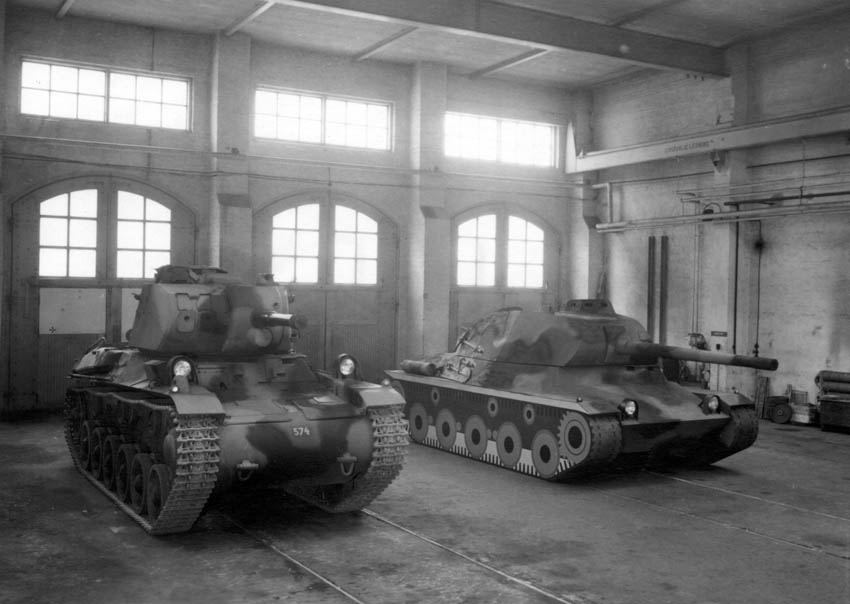
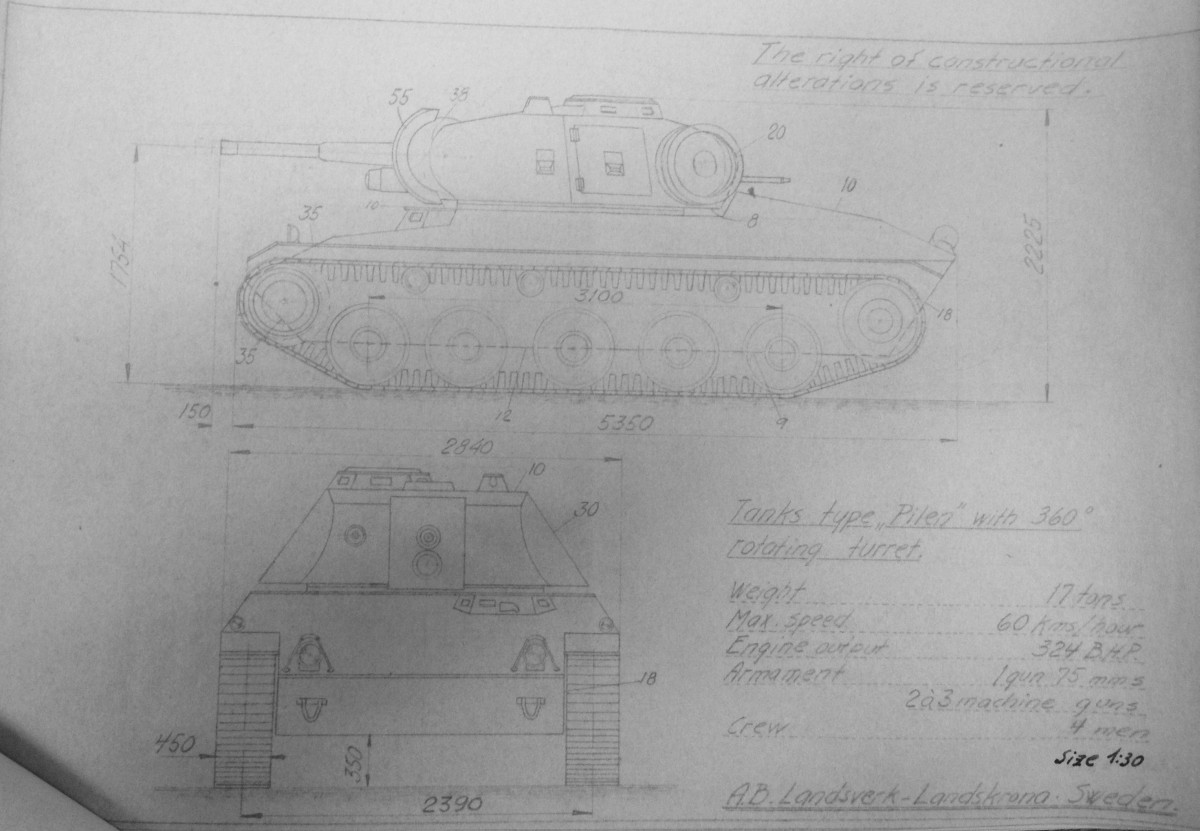
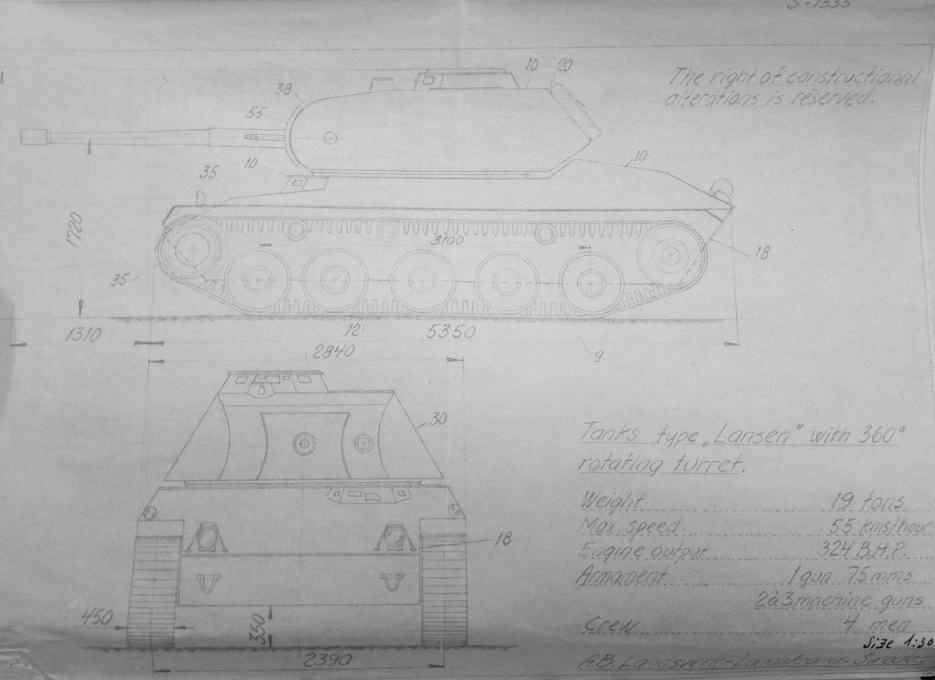
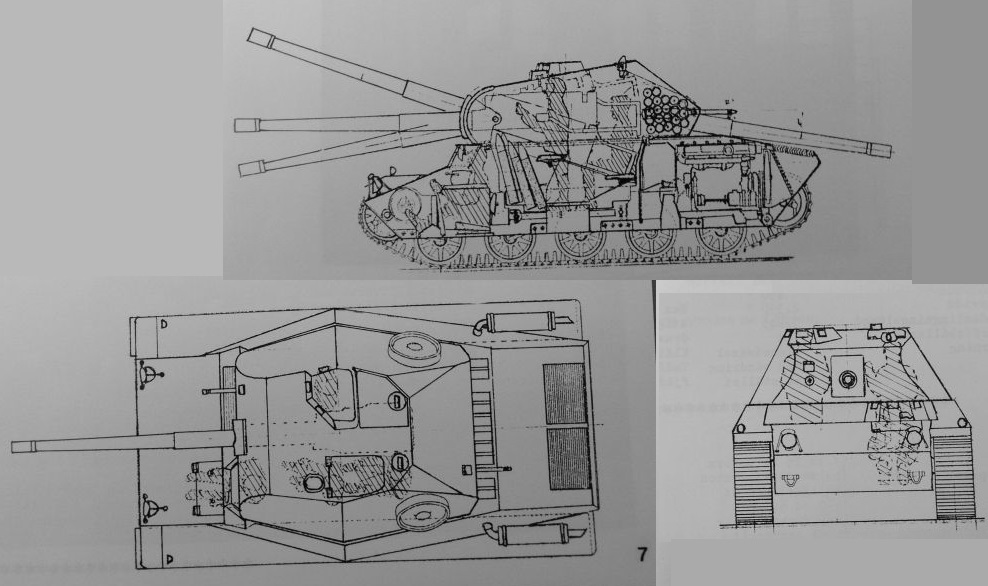
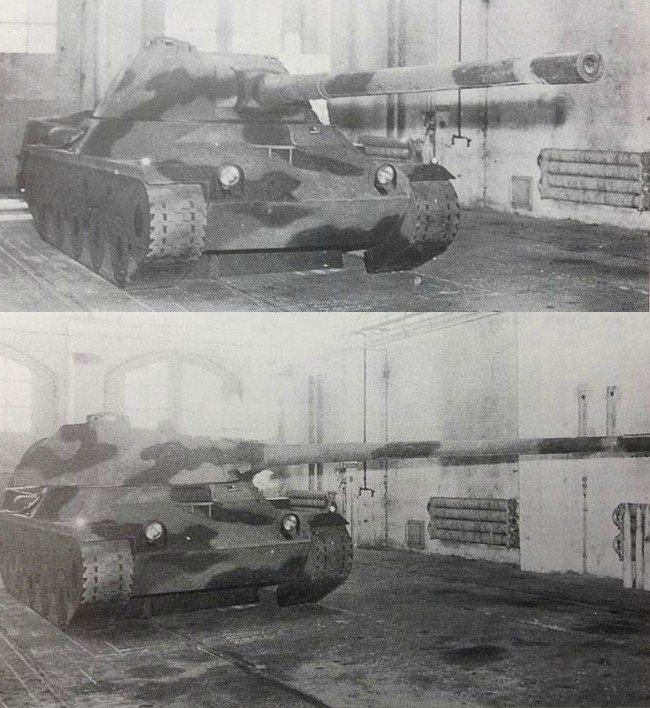
Just out of curiosity, what was the last time Swedish armor saw combat? They appear to me to abide by the motto: ‘talk softly, but carry a big stick’
2010, IIRC. Against the taliban, not sure if that really counts.
The Dutch were also involded, but IIRC they didn’t bring tanks to Uruzgan (Afghanistan). Shame our retard government sold our Leopard IIs, what if the Belgians invade us now? :P
Lol funny cause canada got several leopard 2a6 from the Dutch several years ago
Last time Sweeden was in a ‘real’ war was 1814 when invading Norway without tanks.
No sweedish build armor (tank) have ever seen combat for Sweeden.
The Stridsfordon 90 (an infantry fighting vehicle) was used by the sweeds in Libia and Aghanistan.
Thanks for the clarification, is there never a discussion about selling the Swedish tanks? I’m not really into the details of the rank production over there, but in times of recession it appears to be a waste of resources buiding these beauties without using them -_-
You know, the reason to have a army isn’t to use it. The reason to have it is to be able to NOT USE IT.
Who the fuck want to have war?
Take it easy mate, I wasn’t implying Sweden should go to war! What I meant with my comment was more a question, whether Sweden exports their tanks as well.
I agree with you, war has no place in the 21th century, especially not in Europe, which has seen enough massacre in the last 100 years.
Alot of Swedish armour have seen battle, but mostly in the hands of other nations, since Swedish armour is exported around the world. Different types of the CV 90 has been used in Irak, Afganisthan, Libanona and probably other conflicts too.
Well Sweden itself has not been at war dor over 200 years now so there are not many swedish designs that have seen combat. First would be the Landsverk L-60 and L-62 designs which were used by hungary during ww2 (they were quite outdated compared to the T-34). 2nd would be some of the Strv m/40 tanks that were sold to the dominican republic which fought against the US marines. lets just say that a 37mm armed 10 tonne light tank designed in 1941 is not that great against a M48 patton. the third would be the Swedish CV90 infantery fighting vehicle that saw combat in the middle east against the taliban as part of a UN peace keeping force
Very interesting. For a country that was not involved in a war, they have a good tank development program.
and very sexy one.
Sweden has a very long tradition of weapons manufacturing. Swedish iron and steel was considered to be the best historically and from steel refining it was a very short step to weapons manufacturing. They had the raw materials in form of iron mines in the north and plenty of fuel for the furnaces available in the northern woods. The weapons manufacturing continued even though Sweden was neutral because it was one of the few hard currency generators for what was in the 18/19 centuries one of the most impowerished countries in europe.
sniff sniff..Keep em coming
SS, u often write about lackluster mobility with 25,5km/ton ratio. All scouts on tiers 4-8 don’t surpass this value. Only batchat and some low tiers like bt-2 have better engine. Terrain resistance is more important for gameplay.
This was written by sp15
Got an idea ; what about in addition to writing the name of the author, you add a little vignette with an avatar and a quick description of the author’s works ahead of the articles written by guest authors. That’d help, me thinks.
yeah that was a oversight by me, i thought that most high tier LT´s had around 25-30hp/t
This tank is sexy I want my wiener in it or at least I want it in the game :3
How can we NOT talk about the S Tank!!??? ;)
Because WG has already said it won’t be added to the game?
Because we are not there yet. I still have atleast two or three parts left untill im going to start talking about the S tank
It has already been up on FTR.
That was something i wrote last year. Now i have a lot more, and better info on the whole development of the tank and its characteristics. I will do a completely new overview of the tank in future parts in the Swedish tanks series.
Hope you cover them all from 103A to D.
Thx
Pingback: Swedish Tanks – Part XI: LS-50 | For The Record
tl;dr we make weapons so we can sell them.
should be pointed out here that while sweden havent been in a war for a long long time, we were close to being forced into ww1 due to our reliance on imports, but during ww2 we used our export industry to maintain a balance between great brittain and germany, essentially making both of them think that it was in their best interest not to invade or try to force us into concessions or an alliance(before anyone points it out; yes, sweden allowed german troops to pass, but the swedish concessions to germany were hugely impopular, and it became a pr-failure for germany since the pro-british side in the goverment said that they did not have a choice (and did it to prevent a german invasion). those concessions meant that it became impossible to imply that we should join the war against russia, or even support the finnish during the continuation war)
having your own arms industry and being self sufficent means that it’s easier to maintain that neutrality, both in apperance and for real, it also makes it easier to get arms from other countries, since you might actually have something to trade, or might have in the future.
but since sweden is pretty small, it’s hard to maintain an arms industry, so there is a lot of focus on making stuff competitive and versatile and exporting it.
right now sweden is the 11th largest arms exporter in the world, and the largest exporter per capita.